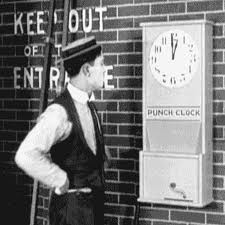The Friday File: The economy is improving! Beer volume rose 1.2% in 2012, to 2.8 billion cases – that’s 210 beers/person, pushing revenues up 3.5% to $62.3 billion. This largely makes up for the 1.3% decline in beer volume in 2011. Super-premium, domestic craft and imports are fermenting heady sales, while mainstream domestics are losing steam, but more slowly than before. I must drink 209 more beers to be average.
Tag Archives: Economics
Fed Head Fiasco
The biggest loser in the current Fed Chairman Sweepstakes is the Fed. Simply considering Summers for the head Fed job politicizes a job that should be non-partisan. Arthur Burns, appointed by Nixon in 1970, was the last Chairman that was closely identified with one political party and he was a disaster. All evidence overwhelmingly shows that the more independent a central bank is from political intrusion the better it performs.
Oily Business
Crude oil prices are up 6% since Syria took center stage on 8/21/13. They had already risen 15% in the prior four months due to rising demand and a 2.7 million barrels/day (bbl/d) reduction in supply in August. But traditionally, demand falls by 2.4 million bbl/d in Sept/Oct, reducing world demand to 75.9 million bbl/d. Additionally, non-OPEC production is expected to rise by 700,000 bbl/d in Q4; half from America.
Disability Disincentive
One reason the labor force participation rate is so low is the explosive growth in those receiving Social Security Disability Insurance. Since 1980, the percentage of 20-64 year olds on SSDI grew from 2.3% to 4.7%. Half the rise is due to an aging work force, an increase in the retirement age and women’s increased eligibility for SSDI. The other half is due to easier eligibility criteria and higher benefits.
Lots of Labor
The best news from the August employment report was that private payroll hours jumped 0.3%. While that seems small, had employers kept hours worked unchanged and hired more workers to do the added work, payrolls would have risen by 572,000 not 172,000. Moreover, average manufacturing worker overtime is 4.4 hours/week. The last time it was this high the unemployment rate was 5.2%, now it’s 7.3%. Employers must eventually hire.
Let’s Make a Deal
The Friday File: Imagine having to choose one of three lotto tickets, two of which are worthless and one of which is valuable. Now suppose one of the two tickets not chosen is removed since the host knows it’s worthless. With two tickets left, what’s your best approach? Staying with the original or exchanging it for the other? Turns out selecting the other is optimal. It’s the Monty Hall Paradox.
Healthy Demand
Obamacare will reduce demand for employees at firms with slightly less than 50 workers and for hires wanting more than 30 hours/week of work. It’ll also reduce the supply of labor. Now, many employees work for health insurance. Once insurance becomes easily available and heavily subsidized for the poor, a major reason to work will be removed. Moreover, the better the subsidized exchange-provided plans are, the less appealing work becomes.
Shrinking Middle
Middle class is defined as adults with household incomes between two-thirds and twice the national median, or between $40,000 and $120,000 today. In 1971, 61% of adults were middle class, 14% were upper class and 25% were lower class. Today, just 51% are middle class, 20% are now upper class, and 29% lower class. Even for the increased percentage in the lower class, real incomes are up 29% since 1971.
A Dose of Coase
Ron Coase, winner of the 1991 Nobel Prize in economics, died yesterday at 102. He was best known for his research into transaction costs and how it influences firm size, and the observation that a lack of property rights increases regulation. He argued that if transaction costs are low and property rights well defined, private agents can achieve optimal outcomes absent regulation, and thus designing such systems should be encouraged.
Laboring On
The Friday File: Looking at both federally-mandated paid vacation and holidays among rich nations, Austria ranks number one with 35 days/year, Germany and Spain tie for second with 34, followed by Italy and France at 31, Belgium and New Zealand with 30 and Ireland at 29. Canada is third from the bottom with 19, Japan is second with 10 and the US is last with zero. Happy Labor Day!









